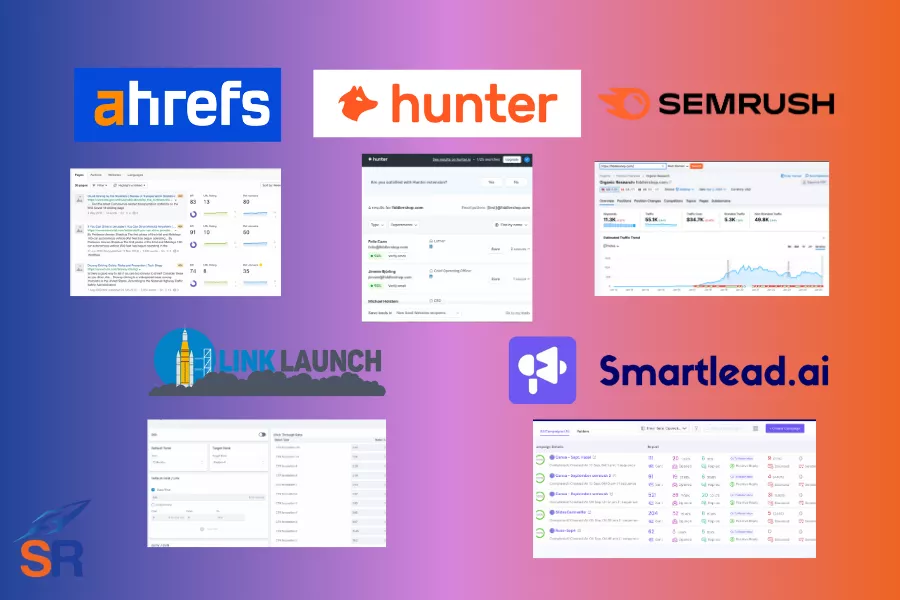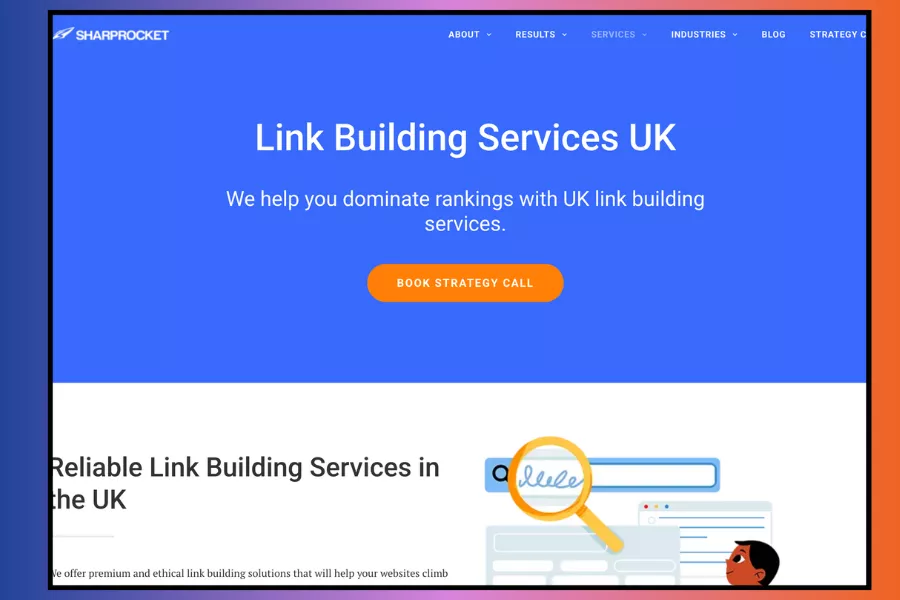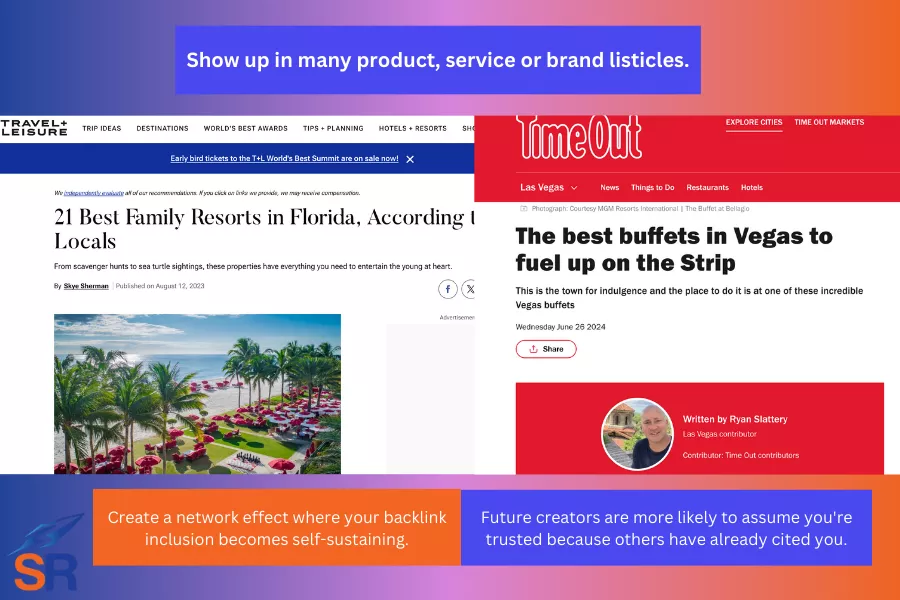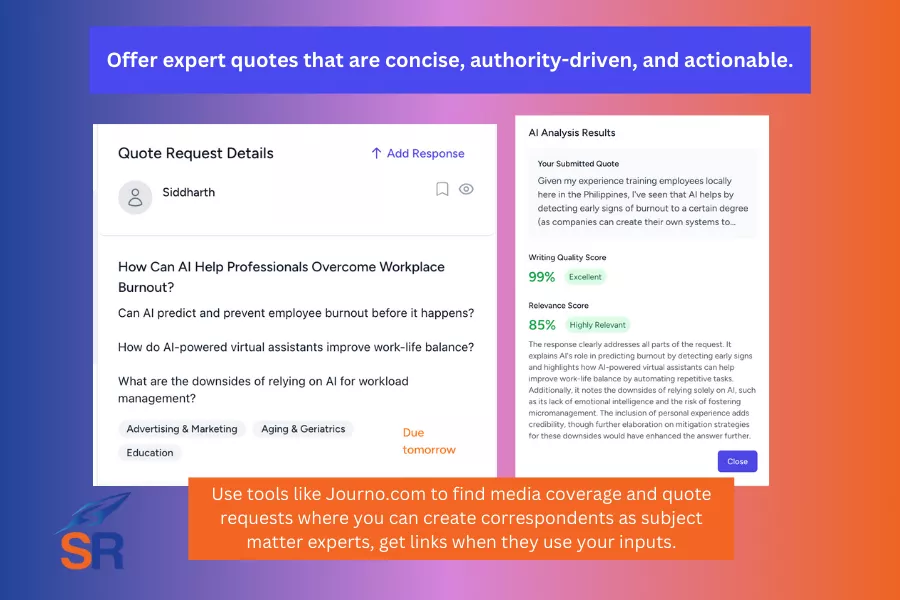Vetting the right link opportunities and earning links from domains that truly matter starts with tracking the right link metrics. These metrics are actually what separate a successful campaign from a mediocre one.
If you purely rely on DR, which the majority of SEO agencies and in-house SEO teams use, you won’t capture the full picture. A backlink from a high-DR site with zero traffic and irrelevant content often adds little value. Conversely, a link from a topically relevant website with focused content and real organic traffic, even if it has substantially lower DR, can move the needle in rankings and traffic.
Contents
ToggleWhy Ahrefs’ DR Alone Is Not a Reliable Metric for Outreach?
In the early years of SEO, many SEO specialists (including me) relied on Google’s PageRank. This algorithm, developed by Google’s founders Larry Page and Sergey Brin, was one of the original algorithms used to rank web pages. It assigned a numerical value to each page based on the quantity and quality of backlinks, with the idea that a page is important if many other important pages link to it.
However, there was a time when PageRank stopped being publicly updated, so the SEO industry shifted to alternatives. Around 2010, Moz’s Domain Authority (DA) became the popular benchmark. It provided a single number to estimate a site’s authority, which was easy to report and track.
Today, the industry standard has shifted again. Ahrefs’ Domain Rating (DR) is now the most commonly used metric by SEO specialists and trusted agencies. DR measures the strength of a site’s backlink profile on a scale from 0 to 100, based on the quantity and quality of referring domains.
To balance it out, using Ahrefs’ DR for outreach still has its advantages, and that’s why most SEO agencies use it:
- It creates a fundamental level of domain reputation (e.g., aiming for DR25 or DR30+ links)
- It’s visible at a glance with the Ahrefs toolbar (makes it easy to prospect for multiple link opportunities manually)
- It simplifies most performance tracking and team reporting (especially when working with in-house enterprise SEO teams).
Setting DR-based targets for link prospects is still the best approach. The only issue is relying on them alone while ignoring more accurate indicators of link value.
Here’s why that’s risky:
- DR reflects domain-wide strength, not page-level value.
- Google evaluates links based on context, relevance, and placement (factors not captured by DR alone)
- High-DR doesn’t guarantee SEO impact (most of which, overused high-DR domains often have minimal effect).
We take metrics further as one of the best UK link building agencies.
When reviewing our list of link prospects, here are the link building tips and link metrics we consider (and you probably don’t use often):
1. Check the Keywords They Get Traffic From
As you consider Ahrefs’ DR of the website, review what keywords it ranks for. Use tools like Ahrefs or SEMRush to pull its top pages and top organic keywords. Both will show you whether the site attracts meaningful traffic from search terms relevant to your industry.
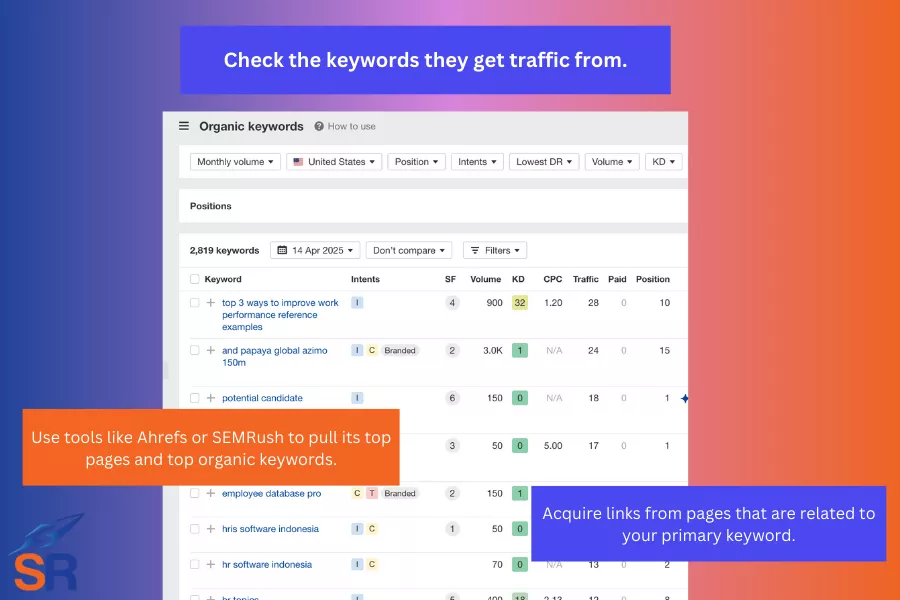
For example, if a marketing blog ranks for terms like “CRM tools for small business” or “email automation strategies, it’s a strong signal that the site has topical authority (or at least has indexed pages with relevant topics).
However, if the top keywords are completely unrelated (or I may say, “spammy”), such as “online betting”, or “essay writing services” (which by the way, I still see up to this date with some websites), that indicates the site is eiter overly commercialized, or part of a link scheme.
Checking keyword traffic can help you avoid websites that inflate traffic through unrelated or clickbait content (which is very easy to do). A site may appear active in terms of traffic and content publishing rate, but if its visibility is tied to irrelevant topics, the link carries little SEO value.
» Wondering how your competitors earn their links? Learn how to run an advanced competitor backlink analysis and find link opportunities they’re missing.
2. Contextual Relevance
Contextual relevance measures how well the linking page aligns with your topic, language, and intent content.
It’s not enough for a site to have a high Ahrefs DR or strong traffic. If the content surrounding your link is off-topic, generic, or inconsistent with your industry, the link will have limited SEO value.
Here’s what we look for in contextual relevance:
- Topical alignment: The linking page should cover a subject related to your content. For instance, if your page concerns project management tools, the link should come from a page discussing productivity, software, or workflow, not cooking tips or lifestyle hacks.
- Anchor text fit: The preferred anchor text should be natural and relevant to your target keyword (avoid forced placements or off-topic phrases).
- Surrounding content: The paragraph around the link should support and explain the linked page’s topic.
- Minimal link dilution: Pages with fewer outbound links and a focused message provide stronger signals than link-heavy, general-purpose content.
The impact of contextually relevant links on your site compounds and benefits more than visibility. It helps Google better understand your website through contextual understanding of pages that link to your webpages.
» Want to go beyond basic outreach? Explore advanced link building strategies in SEO to earn high-quality links that actually move rankings.
3. Estimated Traffic of the Linking Page (URL-Level)
One of the main limitations of relying on Ahrefs’ Domain Rating alone is that it scores the domain as a whole, but not the specific URL giving you the backlink. To better understand the link value (even by estimate), you need to check the estimated monthly traffic of the page that will link to you.
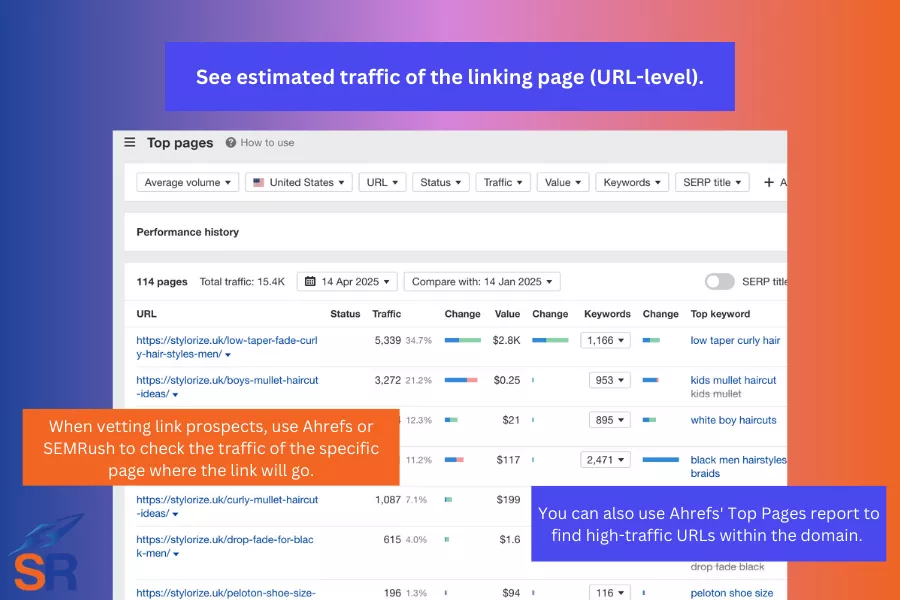
Here are a couple of benefits of using page-level traffic:
Identifies high-value pages on low-DR sites.
A low-DR website might publish one page that ranks exceptionally well, but is often dismissed by traditional link prospecting methods, given its average DR. Tracking URL-level traffic allows you to catch these hidden opportunities.
Rewards outreach to high-traffic pages.
A page-level traffic metric encourages outreaches to target a site’s top-performing pages, which is a smarter move for SEO agencies to maximize the value from every link.
Compensates for recently launched or fast-growing sites
One of the overlooked parts of link prospecting is maximizing websites that are new or under-reviewed by Ahrefs, and have low DR, for that matter. But if its pages already rank and are driving organic traffic, those links are more likely to be valuable than DR suggests.
When vetting link prospects, use Ahrefs or SEMRush to check the traffic of the specific page where the link will go. You can also use Ahrefs’ Top Pages report to find high-traffic URLs within the domain.
» Want to strengthen your existing backlinks? Explore modern approaches to tiered link building that boost link equity without using spammy tactics.
4. Aim to Get Dofollow Links (But Recognize Strategic Exceptions)
Even though Google has stated that nofollow links can be treated as hints (and are actual recommendations to the page/website), you can’t rely on your link building campaigns on getting the majority to be no-follow links.
Especially if you’re working for an SEO agency where clients are particular about the type of links you get, many SEO specialists don’t count nofollow links as part of outreach KPIs. They only pay for do-follow links, as no-follow links are sometimes a by-product of an excellent digital PR campaign or other link building strategies.
Our best bet to be the default outreach strategy is prioritizing dofollow link placements.
The only exception is that many high-DR media outlets and authoritative news sites (DR70+) only offer nofollow links unless you pay steep fees. By also considering no-follow links, you get two key advantages:
- Builds relationships with top-tier publishers (intangible benefit, but can’t easily measure) that can lead to future dofollow link placements, co-branded content, or digital PR features.
- Gain more branded exposure on high-traffic, trusted websites, where visibility can drive referral traffic, credibility, and long-term authority.
At best, aim for dofollow links by default, but don’t ignore strategic nofollow link placements when they offer long-term brand and relationship value.
5. Link Placement Factors
As a link building consultant, I’m heavy on link placements, which is knowing where a link is actually placed on a page.
Given that Google gives more weight to links placed in the main content area, especially those that appear early in the content and are contextually relevant, it’s one of the top link metrics every SEO specialist must consider.
Four important link placement factors we consider as a link building company:
- Position within the content: Links placed higher on the page or within the opening paragraphs tend to carry more weight—they are more likely to be crawled, seen, and clicked.
- Main body vs sidebar or footer: Links embedded in the main body text are far more valuable than those placed in sidebars, footers, author bios, or boilerplate sections.
- Surrounding content quality: The link should appear in a paragraph discussing the topic of your page (see our tip earlier on contextual relevance).
- Number of other outbound links: If the page has too many outbound links, the value is reduced to each one (fewer, more selective links indicate higher editorial standards).
Make it a standard practice to inspect where your link appears on the page. A higher likelihood of visibility helps attract more clicks and referral traffic to your destination page.
6. Outbound Link Profile Health
Outbound link profile health is the quality and relevance of the external links on a webpage, evaluating where a page is linking to, not just how many links it has.
Check where their external links go (“destination webpages”).
Assess if the website links to quality, reputable sources or spammy, irrelevant, or suspicious domains (i.e., payday loans, crypto schemes, or thin-affiliated pages).
Outbound link profile health matters as it affects the credibility of your webpage. When your backlink sites include links to low-trust or manipulative websites, it sends signals that weaken your link’s value (even if your own content on the page is strong and credible).
» Looking for tools to scale your outreach? See our list of the best link building tools for SEO that can help you build better links, faster.
7. Referring Domain Growth Trend
Check how fast or steady the linking website gains referring domains over time. If a site grows naturally, it suggests (probably seeing) that it’s producing linkable assets and is seen as a credible source of information (its content assets are getting citations).
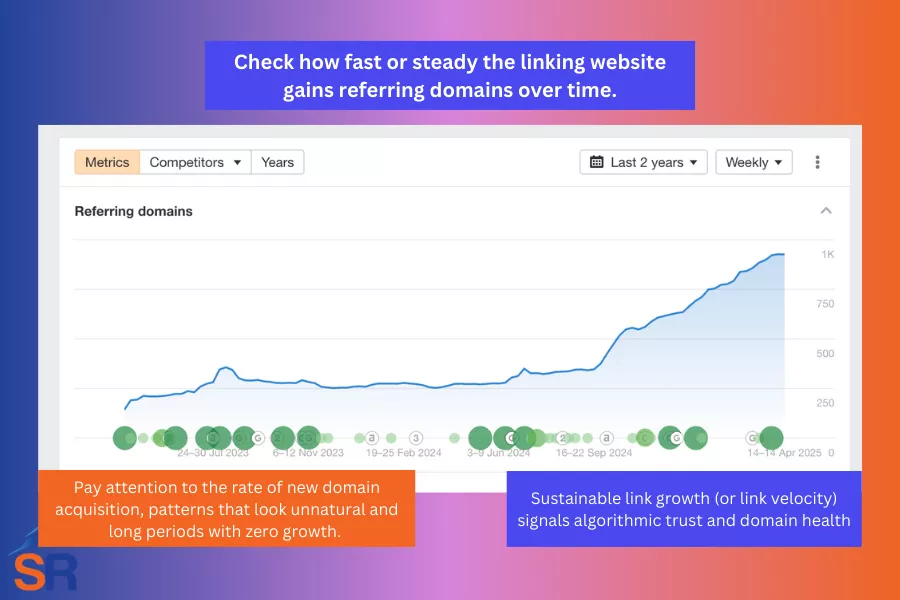
It’s important to watch out for:
- Steady, upward trend: Indicates consistent publishing, link earning activity, and ongoing visibility in the niche.
- Sudden spike in referring domains Could be a sign of a robust digital PR campaign, aggressive link-building campaigns, or manipulative link-building tactics (see the site’s backlink profile for deeper analysis).
- Flat or declining trend: Suggests the site may no longer be active in content publishing, lose its relevance in content, or not attract new organic links.
Use tools like Ahrefs’ Referring Domains graph to review historical link data. Pay attention to the rate of new domain acquisition, patterns that look unnatural (i.e., 200+ new domains in one week, then none the next), and long periods with zero growth.
Sustainable link growth (or link velocity) signals algorithmic trust and domain health. Given that a website that earns organic links over time is being perceived as a highly credible source of information (vouched for by other niche publishers through their external linking efforts). While one website that grows too fast or stagnates may trigger a spam filter or lose ranking power.
» Looking for a trusted SEO partner to build high-quality links that pass the above link metrics? Check out our link building services designed to earn real, white-hat backlinks that drive results.
Written By
Venchito Tampon
CEO and Co-Founder at SharpRocket, a link building agency. With a decade of experience, Venchito has a proven track record of leading hundreds of successful SEO (link builidng) campaigns across competitive industries like finance, B2B, legal, and SaaS. His expert advice as a link building expert has been featured in renowned publications such as Semrush, Ahrefs, Huffington Post and Forbes. He is also an international SEO spoken and has delivered talks in SEO Zraz, Asia Pacific Affiliate Summit in Singapore, and Search Marketing Summit in Sydney, Australia. Check out his other business - Hills & Valleys Cafe.
Reviewed By

Sef Gojo Cruz
COO at SharpRocket, overseeing end-to-end operations, from crafting link building strategies to leading high-performing teams. Previously led SEO initiatives at Workhouse, a digital agency in Australia, and Keymedia, a real estate media company based in New Zealand.
How our LINK BUILDING AGENCY in UK builds 250 links/mo consistently using Predictable Link Building Methodology™…
- Using a SIMPLE and PROVEN system
- Using a SCALABLE strategy
- No private blog networks
- No creepy outreach emails


